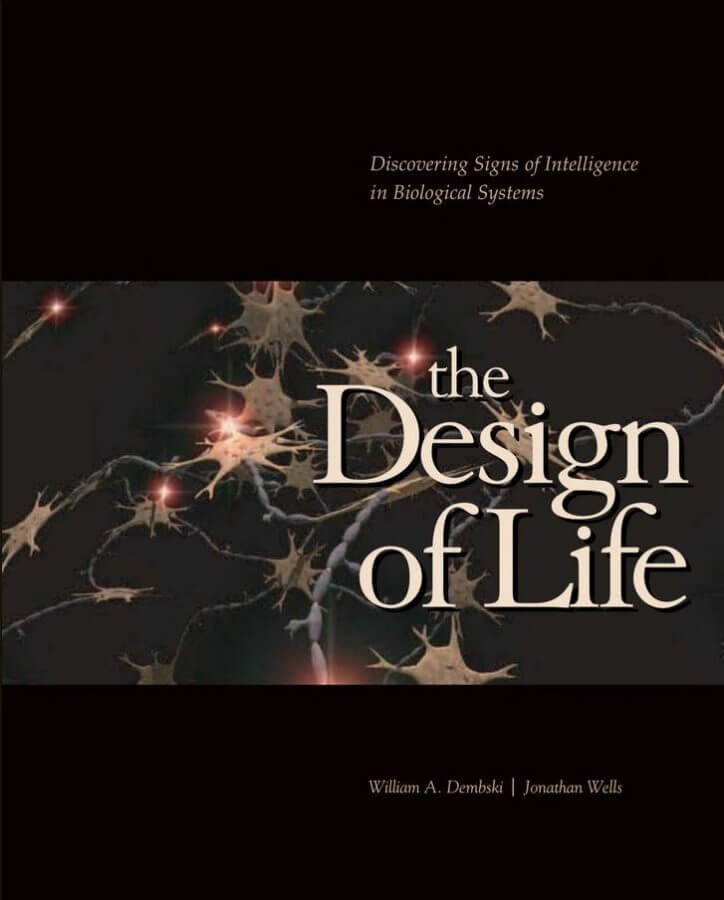
The Design Of Life Discovering Signs Of Intelligence In Biological Systems Foundation For Thought And Ethics ( 2007)
Author: William A. Dembski, Jonathan Wells Editor Category: Intelligent Design - Evolution -, Scientific Books Pages: 418 Language: English File Size: 140 MBThe Design Of Life Discovering Signs Of Intelligence In Biological Systems Foundation For Thought And Ethics ( 2007)
Discovering Signs of Intelligence in Biological Systems
William A. Dembski \ Jonathan Wells Editor, William A. Dembski
The Design of Life features an artist’s portrayal of human brain circuitry as it might appear if magnified many thousands of times. The portrayal illustrates an intriguing discussion of the human brain in Chapter One, quoted here in part:
“During the first eighteen months from conception, the brain’s neurons are formed, deployed, and connected in a tsunami of activity, at the rate of 250,000 per minute, until 100 billion neurons are arrayed in a powerful, organized matrix. Each neuron may have tens of thousands of finger-like appendages, or dendrites, which connect with other neurons and dendrites in a bafflingly complex circuitry. No two neurons are exactly the same, with the result that the circuitry of each brain is unique. That circuitry is more complex than all the telephone circuitry on the face of the earth. Three decades ago science-writer Isaac Asimov was so impressed with the densely organized complexity of the human brain that he wrote: “In Man is a three-pound brain, which, as far as we know, is the most complex and orderly arrangement of matter in the universe.”
The Design Of Life CONTENTS
Preface by Jon Buell
The Meanings of “Evolution”
1 HUMAN ORIGINS
1 . 1 William James Sidis 1
1 .2 Our Fossil Ancestors? 5
1.3 The Ninety-Eight Percent Chimpanzee? 7
1 .4 The Benefits of Bigger Brains 9
1.5 The Benefits of Smaller Brains 1 1
1.6 Language and Intelligence 14
1.7 Morality, Altruism, and Goodness 17
1.8 Modified Monkey or Modified Dirt? 21
1.9 Discussion Questions 23
2 GENETICS AND MACROEVOLUTION
2.1 Darwin’s Theory 25
2.2 Mendel on Inheritance 30
2.3 Genetic Diversity 33
2.4 The Molecular Basis for Genes and Evolution 36
2.5 The Adaptational Package 40
2.6 How Many Genes Must Change? 45
2.7 “Evo-Devo” 47
2.8 Discussion Questions 54
3 THE FOSSIL RECORD
3.1 Reading the Fossil Record 57
3.2 The “Gravest Objection” to Darwin’s Theory 59
3.3 Major Features of the Fossil Record 63
3.4 Imperfect Record 69
3.5 Insufficient Search 71
3.6 Punctuated Equilibrium 73
3.7 Abrupt Emergence 77
3.8 Using Fossils to Trace Evolutionary Lineages 81
3.9 Abusing Fossils to Trace Evolutionary Lineages 86
3.10 Discussion Questions 91
THE ORIGIN OF SPECIES
4. 1 Evolution’s Smoking Gun 93
4.2 Species as Reproductively Isolated Populations 95
4.3 Alleged Instances of Observed Speciation 99
4.4 Microevolution, Macroevolution, and Evo-Devo 102
4.5 Speciation and Intelligent Design 106
4.6 Discussion Questions 110
5 SIMILAR FEATURES
5.1 Classification and Interpretation 113
5.2 Analogy and Homology 117
5.3 The Puzzling Pandas 120
5.4 Darwinism’s Redefinition of Homology 124
5.5 Molecular Phylogeny 126
5.6 Vestigiality: The Best Evidence for Evolution? 131
5-7 Recapitulation 136
5.8 Common Design, Common Ancestry, or Both? 140
5.9 Discussion Questions 143
6 IRREDUCIBLE COMPLEXITY
6.1 Molecular Machines 145
6.2 Michael Behe’s Dangerous Idea 146
6.3 The Bacterial Flagellum 149
6.4 Coevolution and Co-option 151
6.5 The Argument from Irreducible Complexity 156
6.6 Discussion Questions 162
7 SPECIFIED COMPLEXITY
7.1 The Mark of Intelligence 165
7.2 Defining Specified Complexity 168
7.3 The Reach of Chance 172
7.4 Climbing Mount Improbable Without Design? 175
7.5 The Appearance of Design 180
7.6 Hurdles Evolution Must Overcome 183
7.7 The Origination Inequality 1 89
7.8 Not Too Complex, Not Too Simple, Just Right 194
7.9 Variation and Selection out of Sync 199
7.10 Discussion Questions 204
8 THE ORIGIN OF LIFE
8.1 What Needs to Be Explained? 207
8.2 Oparin’s Hypothesis 213
8.3 The Miller-Urey Experiment 218
8.4 Problems with Oparin’s Assumptions 222
8.5 The Proteinoid World 234
8.6 The RNA World 238
8.7 Self-Organizing Worlds 240
8.8 Molecular Darwinism 246
8.9 The Medium and the Message 249
8.10 The God of the Gaps 253
8.11 A Reasonable Hypothesis 255
8.12 Discussion Questions 265
9 EPILOGUE:THE “INHERITTHE WIND” STEREOTYPE
9.1 Hollywood’s Version of the Scopes “Monkey Trial” 267
9.2 The Actual Scopes Trial 268
9.3 The Importance of Keeping Science Honest 270
9.4 The Santorum Amendment 272
9.5 Postscript: Kitzmiller v. Dover 274
Back